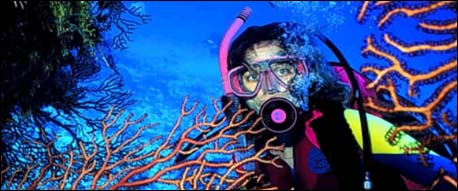
SPONSORED
LINKS
Air Consumption
The amount of air a diver consume underwater depends on several elements. The deeper the descent, the more rapidly the diver consumes air. Thus, shallow dives can last longer than deeper ones. In addition, some people consume air at a quicker rate than others. Several factors influence how efficiently a diver uses air, including diving experience, physical fitness, general relaxation, and a healthy lifestyle that limits tobacco and alcohol intake. Most divers can spend 45 minutes to an hour at 40 ft (12 m) below the surface-the level of a medium-depth dive.
SafeAirİ
A 'SafeAir' is simply air that is enriched with additional oxygen. It has an oxygen concentration between 22% and 50%.
Buoyancy
An upward force on an object placed in the water equal to the weight of water displaced. Divers should practice proper buoyancy control to avoid contact with fragile marine life. Mastering buoyancy control increases diver's comfort-level resulting in significant air consumption improvement.
Safety
Most marine animals pose no threat to divers. In fact, divers pose far more threat to the animals. Coral, for example, can be killed by a diver's single touch.
The shark, octopus, barracuda and moray eel- all are shy and passive around humans. Almost all shark
attacks happen by accident to swimmers and surfers. The shark mistakes them splashing on the surface for a seal or sea lion. In general, animals only attack humans when they are provoked.
Scuba diving should be a visual experience, and divers should
avoid touching anything-plant, animal, or object.
Other risks inherent in recreational diving include running out of
air, breathing contaminated air, or being injured by a boat.
Certification courses teach divers how to avoid these problems
and also how to treat a fellow diver should an injury occur.
OTHER PAGES
5

|